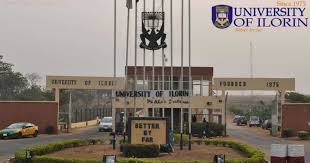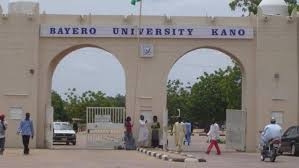ABSTRACT
The study of government expenditure and Agricultural output in Nigeria (1985-2018). The main objective of the is to ascertain the impact of government expenditure on Agricultural output in Nigeria. The data used to analyzed this work is the secondary data that research from 2018(C. B. N statistical bulletin. The ARDL test was conducted, co- integration was used to ascertain the long run relationship between government expenditure and Agricultural output in Nigeria. The exogenous variable was able to explain up to 6&. 28% of the variation in the model, making a strong goodness of fit. The finding investigate that government expenditure has impacted on Agricultural output in Nigeria. Therefore, the study recommended that government should as well increase their expenditure on the Agricultural sector, so that it will be effective to increase the agricultural output in Nigeria.
CHAPTER ONE
INTRODUCTION
1.1 Background to the Study
The Nigerian economy during the first decade after independence could be described as an agrarian economy because agriculture served as the engine of growth of the overall economy. From the stand point of occupational distribution and contribution to GDP, agriculture was the leading sector. In the early 60’s, contributions from this sector accounted for about 70% of the Gross Domestic product (GDP). This was a period when we were not only virtually self-sufficient in production of food crops to feed ourselves but also provides raw materials for industrials and major crops for export. Indeed, agriculture provided the main stimulus to our national economic growth despite the small farm holding and primitive production systems. These contributions of agriculture to the nation overshadowed all other economic sector in the early 1960’s. During this period, Nigeria was the world second largest producer of cocoa, largest exporter of Kernel and largest producer and exporter of palm oil. Nigeria was also a leading exporter of other major commodities such as cotton, groundnut, rubber and hide and skins. Despite the reliance of Nigerian peasant farmers on traditional tools and indigenous farming methods, these farmers produced 70% of Nigerian’s exports and 95% of its food needs.
However, the reverse was the case of the agricultural sector in the seventies when its share of the GDP declined to only 34% by 1974. Ever since then Nigeria has been witnessing extreme poverty and the insufficiency of basic food items. The agricultural sector as at 1996 accounted for less than 5% of Nigeria’s GDP. Over the past two or three decades, the dormant role of agricultural in the economy, especially in terms of ensuring food security, gave way to massive important of basic food items such as rice beans and wheat. This is a clear indication of the failure of the agricultural sector to keep peace with the demand for tts products. This blatant neglect of agricultural sector and the attendant dependency of the economy on mono-cultural product- petroleum have not augured well for the wellbeing of the economy as a whole. In a bid to correct this anomaly, the government, from the year 1975 decide to directly participate in commercial production of food crops,. Many large scales agricultural projects specializing in the production of grains, livestock, dairies, animals’ feeds and others were established. Sugar factory were set up at Numan, Lafiagi and Sunti. The Nigerian Agricultural and corporative Bank (NACB) were also established in 1973 as part of government’s effort to channel oil fund into agricultural through the provision of credit facility to prop agricultural and agro-based ventures. Various agricultural development programmes were also adopted as part of efforts to revitalize agricultural performance. These were backed up by substantial budgetary allocations, but agricultural output is still very low.
Take for instance, despite the huge amount invested in Fadama Rice programs, Nigeria is still spending huge amount on rice importation. This shows that the results were not adequate not only in relation to the committed financial resources, but also in relation to the nation’s minimum needs of agricultural products. It is against this backdrop that this research work sets to examine the extent to which government spending influence agricultural output in Nigeria.
1.2 Statement of the Problem:
Inadequate funding of the agricultural sector has been re-echoed by several experts as an obstacle to increased agricultural output (CBN, 2007; Bernard, 2009). However, from a nominal point of view, it is evident that in Nigeria, government spending on agriculture has continued to increase over the years while empirical evidence has revealed that the performance of the agricultural sector has been inadequate. The agricultural sector in Nigerian which was the main stay of the economy is no longer performing the lead role it was known for. By mid-1970’s Nigeria’s Agriculture started to experience problems, agricultural exports began to decline and food shortages started emerging, from 1975, emboldened by considerable increased revenue from petroleum, government assumed heavier responsibilities for agricultural production, input supply and marketing’ in addition to adopting credit control and other allocative policies in favour of agricultural. Agricultural production stagnated at less than I percent annual growth rate between 1970 and 1982. There was a sharp decline in export crop production, while food production increased only marginally. Thus, domestic food supply had to be augmented with large imports. Food imports bill rose from a mere N113.88 million annually in 1970-1974 to N1,964 million in 19991 [10]. Since 1990 and until recently, Nigeria has been spending an average of 60 million USD on the importation of rice annually (Alkali, 1997). Indeed, in 1994, the agricultural sector performed below the projected 7.2% of budgetary output.
Theoretically, input-output theory in economics posits that input determines output. Moreso, Keynes postulated that increased government spending boosts economic growth. In the case of Nigeria, there has been a conflicting view about spending on agriculture just as we can see from various scholars cited above.
Therefore, there is need to examine the extent to which government expenditure as an input has affected agricultural production as an output. It is in the light of this that research was carried out to study government expenditure and agricultural output in Nigeria 1986 – 2018.
1.3 Objective of the Study
The broad objective of this study is to examine the impact of government expenditure on agricultural output in Nigeria. However, the specific objectives are:
- Ascertain the impact of Government expenditure on agriculture on agricultural output in Nigeria
- Determine the impact of bank loan to agricultural sector on agricultural output in Nigeria
- Examine the impact of Gross fixed capital formation on agricultural output in Nigeria.
- Examine the impact of inflation on agricultural output in Nigeria
1.4 Research Questions
The study is guided by the following research questions;
- What impact has government expenditure on agriculture have on agricultural output in Nigeria?
- Has bank loan to agriculture significantly impacted on agricultural output in Nigeria?
- What impact has gross fixed capital formation on agricultural output in Nigeria?
- Does inflation impacts on agricultural output in Nigeria?
1.5 Statement of Hypotheses
Hypothesis 1
H01: Government expenditure on agriculture has no significant impact on agricultural output in Nigeria.
Hypothesis 2
H02:Bank loan to agriculture has no significant impact on agricultural output in Nigeria.
Hypothesis 3
H03:Gross fixed capital formation has no significant impact on agricultural output in Nigeria.
Hypothesis 4
H04:Inflation rate has no significant impact on agricultural output in Nigeria.
1.6 Significance of the Study:
The fundamental importance of this study is to examine the relationship or correlation that exists between government expenditure and agricultural output in Nigeria. So far, little hyas been done to determine the important of agricultural sector on economic growth in Nigeria. But a number of studies have been carried out on cross country analysis of less developed countries. Most studies in this area consider only a small number of variables trying to establish agricultural growth.
The basic significance of this study is that it employs econometric models with strong theoretical under pinning that relate agricultural and economic growth in Nigeria and that growing concern of the agricultural sector. It would be useful to explore this and come up with results that would help in the policy building of the Nigeria economy.
1.7 Scope of the study
The research data should be collected between wide ranges of time spanning over a period of thirty-five years from 1986 to 2018. It is a secondary data and majorly from government institutions like the Central Bank of Nigeria.
1.8 Limitation of the study
To some extent this research work is limited by some factors which include;
- Limited time: which constrained the researcher and prevented vast coverage to gather necessary date needed
- Lack of fund: this came in form of high transportation co. logistics difficulties, hence a reduction on the amount of information tend to acquire
- Other problems encountered include inconsistency in data sourcing due to poor storage and management of available data.
Pages: 63
Category: Project
Format: Word & PDF
Chapters: 1-5
Material contains Table of Content, Abstract, References & Appendix.





